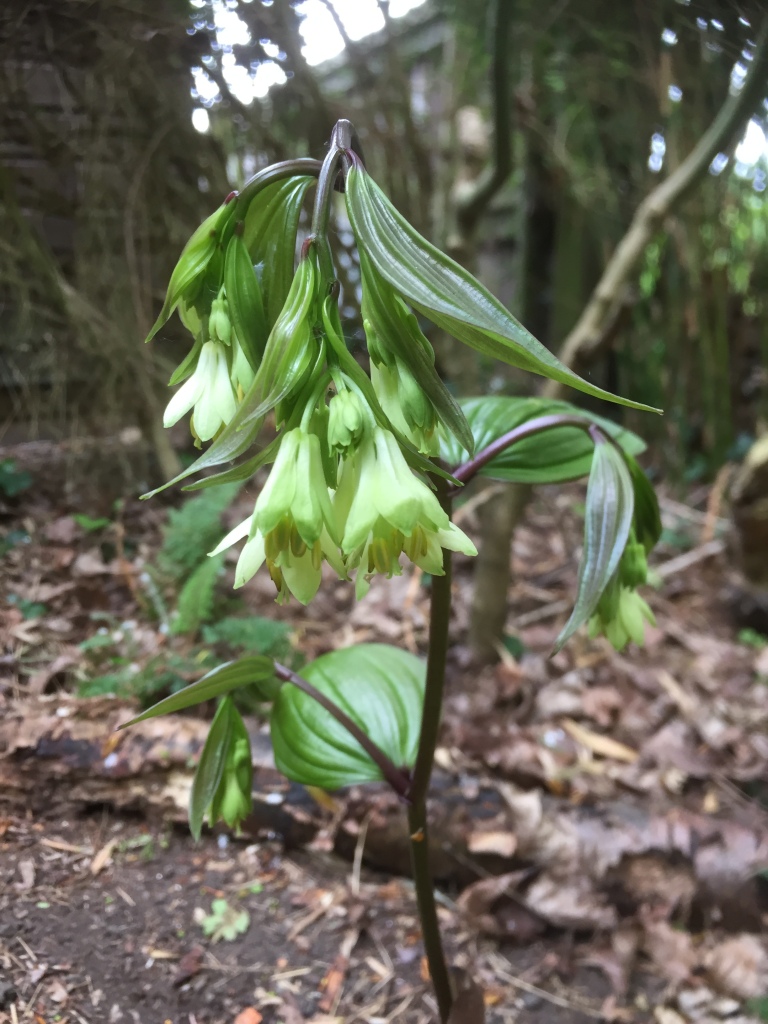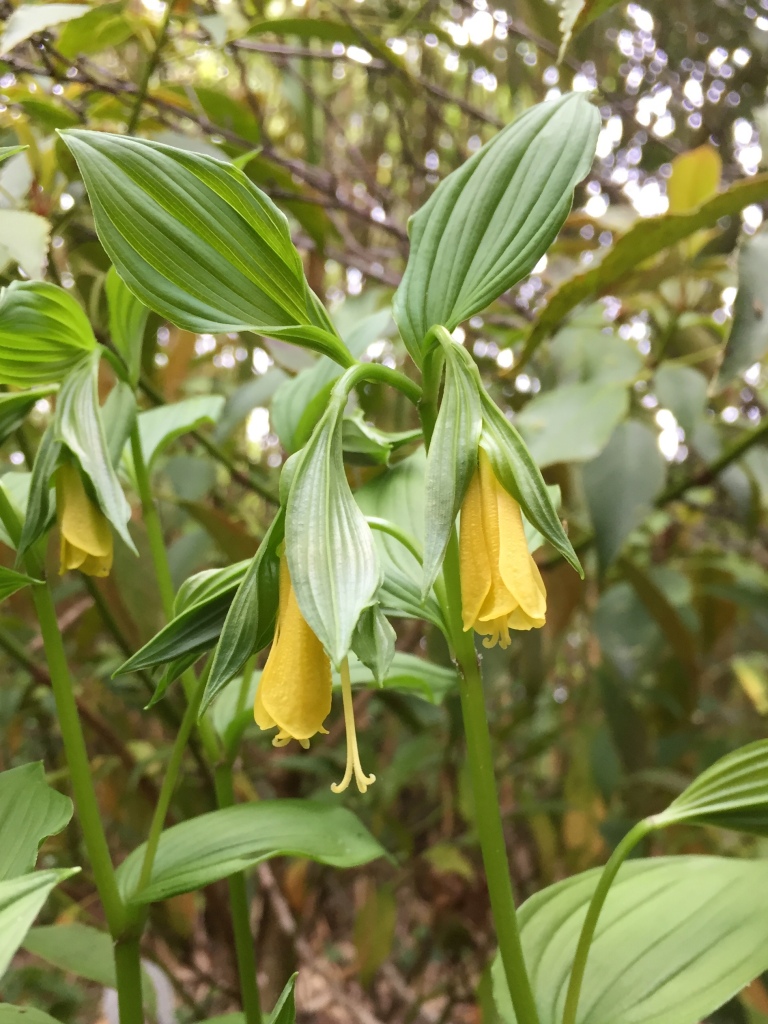These three related genera contain some excellent perennials for shade and deserve to be more widely grown. The genus Disporopsis is closely related to Polygonatum and its common name is Evergreen Solomon’s Seal. The genus Disporum has had rather a convoluted taxonomic history, having at various times been included in the Convallariaceae (with Disporopsis), Liliaceae, Asparagaceae, and Uvulariaceae. More recent genetic research places it in the family Colchicaceae. Disporum and Disporopsis are native to temperate parts of Asia, especially China, Japan, Korea and Taiwan. The genus Prosartes contains the North American species which were previously included in Disporum.

Disporopsis are quite tough little plants, with small white or cream, sometimes purple spotted, bell shaped flowers in spring. The flowers are usually lemon scented, and followed by purple berries. They form clumps from slowly spreading rhizomes, and although they prefer moist woodland conditions, will tolerate dry shade. Disporopsis pernyi, from China, is the most widely available of the eleven or so species. Besides being evergreen, Disporopsis species have the significant advantage over their herbaceous relatives of being untroubled by Solomon’s Seal Sawfly.

Disporum is a larger and more varied genus, with approximately twenty five species, and includes some striking architectural plants. It is probably the most ornamental of the three genera, but unfortunately a little fussier as to cultivation than Disporopsis. Disporum longistylum ‘Green Giant’ is a Dan Hinkley introduction from Sichuan, China, with bamboo like stems up to 8 feet tall, and delicate greenish white flowers. Disporum longistylum ‘Night Heron’ is a slightly shorter plant with amazing dark, chocolatey new foliage in spring. One of my personal favourites, Disporum bodinieri, is a more delicate plant at 2-3 feet tall, with pretty cream bell shaped flowers in May. Some forms of Disporum cantoniense have attractive purple flowers, whilst Disporum uniflorum has comparatively large yellow flowers. Disporum sessile is a shorter Japanese species, one foot to eighteen inches tall, of which there are many different variegated forms, showing the Japanese horticultural love of both variegation and finding infinite varieties of their native species. Disporum smilacinum is another species with many variegated forms cultivated in Japan, and also a pink flowered form. They all require at least partial shade, humus rich soil, and adequate moisture, being less tolerant of dry conditions than Disporopsis. Some species are evergreen or semi-evergreen, and most have black berries.

Finally, Prosartes, the North American genus, shares its common name of Fairy Bells with Disporum. There are currently six species. Most are shorter, to about 2 feet tall. The most commonly encountered are Prosartes hookeri, known as ‘Drops of Gold’ because of its protruding yellow anthers, and Prosartes smithii, also known as ‘Fairy Lanterns’. The flowers are generally followed by red berries, which are reputedly edible though not especially flavoursome. Unlike Disporum and Disporopsis, which are clearly quite tasty, the leaves of Prosartes species contain a compound which deters slugs and snails.
